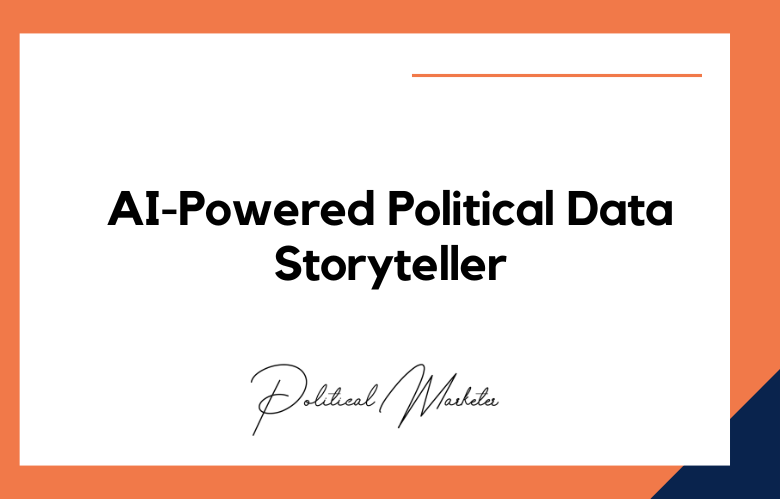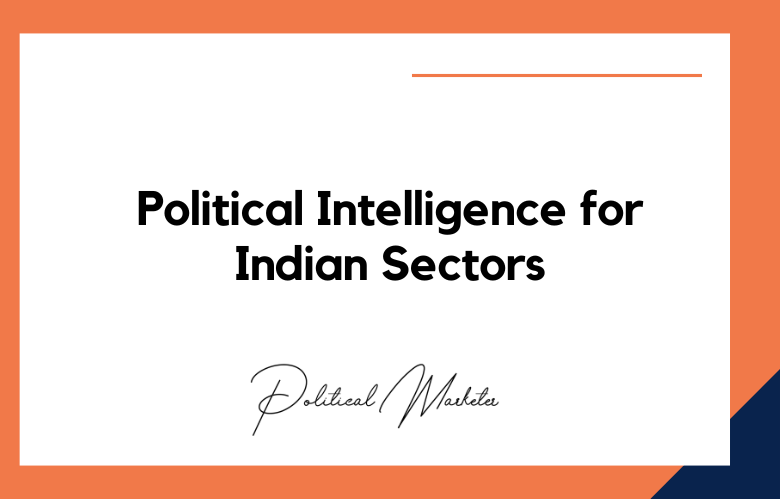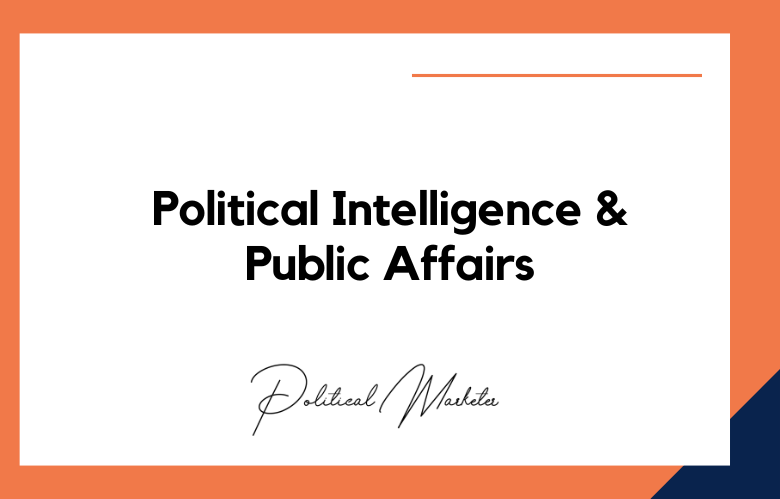In the past, political campaigns used various techniques to reach potential voters. This included TV and radio ads, door-to-door campaigning, and rallies. However, in recent years, technological advances have led to the rise of new methods of reaching voters. One such method is the use of contextual insights.
Contextual insights refer to understanding the context in which someone is consuming content. This means considering location, time of day, and devices being used. By understanding these contextual factors, political campaigns can tailor their content so that it is more likely to be seen by potential voters.
With the rise of social media, political campaigns have had to adapt how they reach voters. Nowadays, context is everything. To succeed, campaigns must generate insights from constantly changing data. It led to the rise of “contextual intelligence” as a vital tool for political campaigns.
What is Contextual Intelligence?
Contextual intelligence is the ability to understand and act in the ever-changing context of a situation. In other words, it’s the ability to make sense of the data constantly generated in real-time.
For political campaigns, contextual intelligence is essential to make informed decisions about where to allocate resources and how to craft messages that resonate with voters.
Contextual intelligence begins with data collection. Data can be collected from various sources, including social media, online news, and polling. Once assembled, it is analyzed to generate insights that can be acted upon.
This process requires both human analysis and artificial intelligence (AI). It helps to identify patterns and trends in data that would be otherwise difficult for humans to discern.
Moreover, it is essential to note that AI is not a replacement for human analysis; instead, it should be used as a supplement. The final step is to use these insights to inform real-time decision-making.
Contextual insights are data points that reveal the context in which people make decisions. In the case of political campaigns, contextual insights can help understand why someone might vote for a particular candidate or what issues are most important to them.
This information can then be used to create targeted content that speaks directly to potential voters’ needs and concerns.
For example, a campaign has identified environmentalism as an essential issue for a particular group of voters. The drive can use contextual insights to learn more about why those voters care about the environment and what issues are most important to them.
This information can create targeted content that speaks directly to those voters’ needs and concerns. The result is an engaged electorate and a greater chance of success at the polls.
The benefits of using contextual insights
There are several key benefits of using contextual insights in political campaigns. First, it allows campaigns to segment their audience and create targeted content that resonates with each group.
Second, it helps campaigns better understand the most critical issues to their constituents. And third, it allows movements to establish themselves as thought leaders on vital issues. By educating potential voters on the issues that matter most, campaigns can build trust and credibility—two essential ingredients for success on election day.
How Political Campaigns are Utilizing Contextual Insights to Reach More Voters
Contextual insights provide a way for campaigns to understand the complex interplay of factors influencing voter behavior. By analyzing large data sets, contextual insights can help campaigns identify trends and target specific voters with tailored messages.
In the past, campaigns relied on polling data to gauge public opinion. However, polling only provides a snapshot of people’s feelings at a given moment and does not necessarily reflect how they will feel on Election Day.
Contextual insights offer a more comprehensive view of voter behavior by considering various factors, including social media activity, demographic information, and search activity. Campaigns can use contextual insights to target specific voters through social media or Google ads.
For example, if a campaign sees a particular group of voters interested in environmental issues, it can target those voters with ads about the candidate’s environmental policies. Contextual insights can also be used to customize the campaign message to appeal to specific groups of voters.
One of the most popular ways political campaigns use contextual insights is through targeted ads on social media platforms. For example, Facebook allows advertisers to target users based on interests, demographics, and behavior.
This means that political campaigns can target ads directly to users likely interested in their message.
Another way that political campaigns use contextual insights is through data collection and analysis. Campaigns can better understand the most effective content types by collecting data on how potential voters consume content. They then use this information to adjust their strategies accordingly.
In the past, political campaigns have relied heavily on focus groups and surveys to understand voter preferences. However, these methods have significant limitations. For one, they only provide a snapshot of people’s thoughts at a particular moment.
This doesn’t account for the fact that people’s opinions can change rapidly, especially during an election. Additionally, focus groups and surveys often have low response rates, leading to inaccurate results.
Contextual insights refer to the circumstances and situations surrounding an event. For example, if you are searching for a new car, you might be more receptive to an ad for a car dealership if it pops up on a car-related website.
The same is true for political ads; if you are reading an article about the upcoming election, you might be more likely to respond to a candidate’s ad than if you saw that same ad while scrolling through your Facebook feed.
By considering the context in which their ads will be seen, political campaigns can create targeted messages that are more likely to resonate with voters. Contextual insights can help campaigns understand what topics interest potential voters and adjust their messaging accordingly.
Contextual insights can help political campaigns show relevant ads to potential voters and better understand what topics interest them. In doing so, they can create targeted messages that cutting through the clutter of today’s busy world is no easy task – but using contextual insights becomes a little bit easier.
Reach more voters and have a more significant impact on the outcome of elections.
Contextual Insights provide a way to overcome these limitations. By understanding the context in which people talk about issues, campaigns can better tailor their messages to connect with voters.
For example, if a campaign knows that voters are discussing healthcare reform in the context of the coronavirus pandemic, it can adjust its message accordingly.
Additionally, Contextual Insights provides a richer campaign data set, being more timely and accurate than traditional methods. By understanding what voters say and how they say it, movements can develop a complete picture of voter preferences.
Web browsing behavior can reveal much about a person’s interests, values, and opinions. This information can be precious to a political campaign targeting specific voters. By understanding what sorts of things a particular voter is interested in, a campaign can tailor its message to appeal to them directly.
Suppose a campaign could highlight the candidate’s plans for green energy initiatives if a voter is interested in environmental issues.
Contextual insights are also helpful in identifying potential swing voters. These individuals may be open to voting for either candidate, depending on which one better addresses their concerns. For example, someone frequently visiting sites about taxes may be persuaded to vote for the candidate who promises to lower taxes.
The Benefits of Using Contextual Insights for Political Campaigns
- Contextual insights can help identify which voters are likely to vote for a candidate.
- Contextual insights can help identify voters likely to support a particular issue.
- Contextual insights can help target potential donors more effectively
- Contextual insights can help create more effective campaign messages
- Contextual insights can help track the effectiveness of campaigns in real-time
- Understand public opinion on critical issues
- Gauge the effectiveness of your campaign messaging
- Identify voter segments that are most likely to support you
- Mobilize your supporters to take action
- Predict how the electorate will change between now and election day
- Contextual insights can help campaigns better understand their constituents
- Contextual insights can help identify critical issues that are important to voters
- Contextual insights can help target potential voters more effectively
- Contextual insights can help improve campaign messaging
- Contextual insights can help track the effectiveness of campaign efforts
Top Strategies: How Political Campaigns Use Contextual Insights in Elections
Political campaigns increasingly leverage contextual insights to gain a competitive edge in elections. By analyzing various contextual factors, from demographic trends and social issues to economic indicators and voter sentiment, campaigns can tailor their messaging, target their outreach efforts, and allocate resources more effectively. Here are some top strategies that political campaigns use to harness contextual insights:
- Demographic Targeting: Campaigns use demographic data such as age, gender, income level, and ethnicity to identify key voter segments and tailor messages that resonate with their specific concerns and interests.
- Geospatial Analysis: By analyzing geographic data, including voting precincts, neighborhoods, and regions, campaigns can identify areas with high concentrations of target voters and allocate resources such as advertising, canvassing, and events accordingly.
- Social Media Monitoring: Social media platforms are rich real-time data sources on voter sentiment, opinions, and trends. Campaigns use social media monitoring tools to track conversations, identify influencers, and gauge public opinion on critical issues.
- Issue Tracking: Campaigns closely monitor public discourse and media coverage to identify emerging issues, controversies, and trends that could impact voter preferences. They then adjust their messaging and policy positions accordingly.
- Economic Indicators: Economic data, such as unemployment rates, GDP growth, and consumer confidence, provide valuable insights into voter perceptions of the economy and their potential impact on electoral outcomes.
- Polling and Surveys: Campaigns conduct regular polling and surveys to gauge voter preferences, track changes over time, and identify areas where they need to focus their efforts.
- Competitive Analysis: Campaigns analyze their opponents’ messaging, strategies, and vulnerabilities to identify opportunities for differentiation and counter-messaging.
- Predictive Analytics: Using historical data and advanced analytics techniques, campaigns develop predictive models to forecast voter behavior, identify swing voters, and prioritize outreach efforts.
- Microtargeting: Campaigns use sophisticated data analytics to create highly targeted messaging and outreach campaigns tailored to specific voter segments, maximizing the effectiveness of their efforts.
- Message Testing: Campaigns conduct message testing and focus groups to evaluate the effectiveness of different campaign messages and strategies, refining their approach based on feedback and performance metrics.
By incorporating these strategies and leveraging contextual insights, political campaigns can optimize resources, engage voters more effectively, and ultimately increase their chances of success in elections.
Conclusion
Political campaigns must generate insights from constantly changing data to succeed. This has led to the rise of “contextual intelligence” as a vital tool for political campaigns.
Contextual intelligence begins with data collection and ends with real-time informed decision-making. To succeed, campaigns must combine human analysis with artificial intelligence (AI).
Call: +91 9848321284
Email: [email protected]











